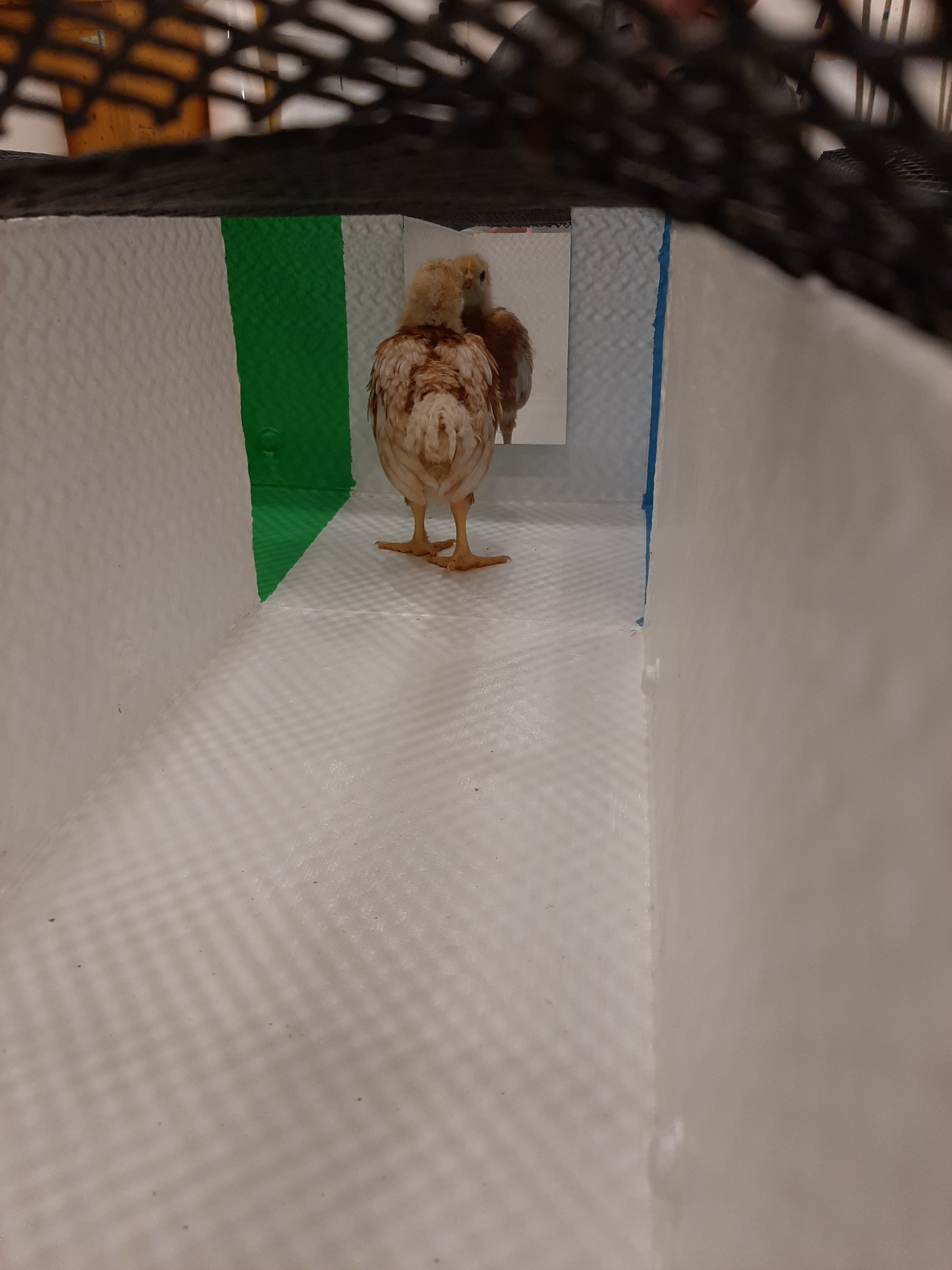Mirror, mirror on the wall
Cage-free Laying hen housing offers more opportunity for species-specific behaviour, though its complexity increases risk of injury which can negatively affect hen welfare.
Early access to perches and ramps can increase spatial navigation skills, bone, and muscle strength. Commercial rearing aviaries vary considerably in their design. Especially during the first weeks of life, a period critical for their development.
Pullets reared in more complex early life environments are expected to 1) locomote more and develop stronger bones and muscles; 2) have better spatial cognition and physical skills, resulting in improved space use; 3) be less fearful. Additionally, different strains are expected to be affected differently by aviary design.
In my study, three commercial rearing aviary designs were used to raise two commercial strains of laying hen pullets. I compared their physical, behavioural and cognitive development.
Four flocks of 3,000 pullets each were raised in one of three styles of commercial rearing aviaries with increasing spatial complexity or in conventional pullet cages. Aviary pullets were confined for 6 weeks (as is common practice) before given access to litter and multiple tiers.
Numerous behaviour tests were performed, e.g., a horizontal navigation test with mirrors as social rewards.
